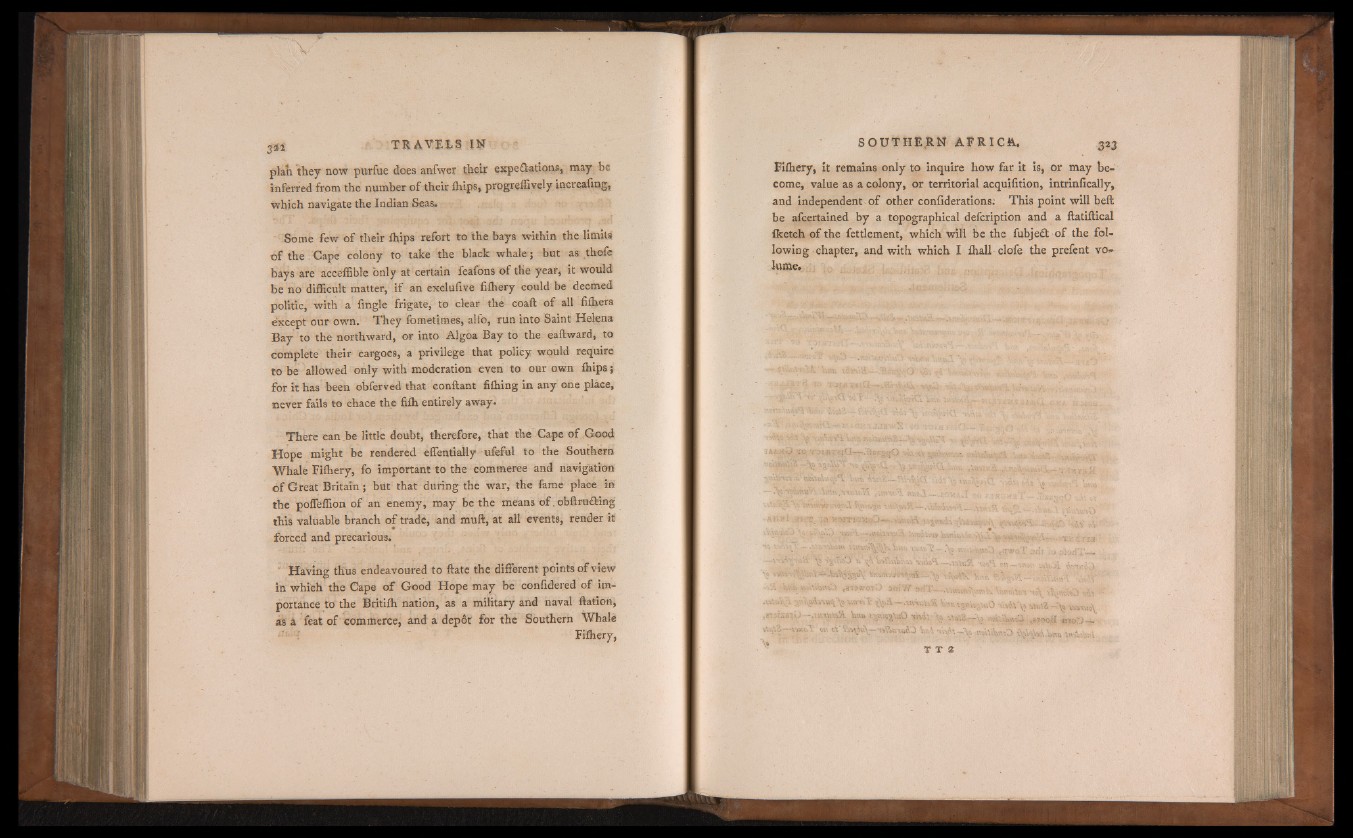
plan they now purfue does anfwer their expectations, may be
inferred from the number of their ihips, progreffively increafing,
which navigate the Indian Seas.
Some few of their ihips refort to the bays within the limits
of the . Cape colony to take the black whale ; but as thofe
bays are acceffibie only at certain feafons of the year, it would
be no difficult matter, if an exclu five filhery could be deemed
politic, with a fmgle frigate, to clear the coaft of all fiihers
except our own. They fometimes, alfo, run into Saint Helena
Bay to the northward, or into Algoa Bay to the eaftward, to
complete their cargoes, a privilege that policy would require
to be allowed only with moderation even to our own ihips ;
for it has been obferved that confiant fiihing in any one place,
never fails to chace the fiih entirely away.
There can be little doubt, therefore, that the Cape of Good
Hope might be rendered eflentially ufeful to the Southern
Whale Filhery, fo important to the commerce and navigation
of Great Britain ; but that during the war, the fame place in
the poffeffion of an enemy, may be the means o f . obftrufting
this valuable branch of trade, and muft, at all events, render it
forced and precarious.
Having thus endeavoured to ftate the different points of view
in which the Cape of Good Hope may be confidered of importance
to the Britiih nation, as a military and naval Ration,
as à feat of commerce, and a dépôt for the Southern Whale
Fiihery,
Fiihery, it remains only to inquire how far it is, or may become,
value as a colony, or territorial acquifition, intrinfically,
and independent of other confiderations: This point will beft
be afcertained by a topographical defcription and a ftatiftical
iketch of the fettlement, which will be the fubjedt of the following
chapter, and with which I fhall clofe the prefent volume.
T T a